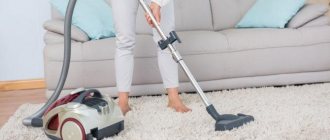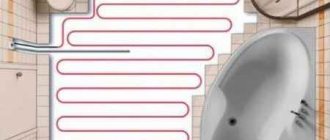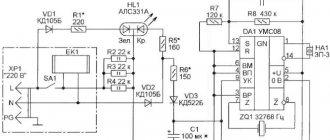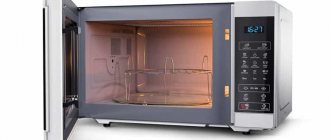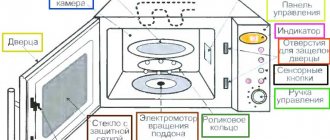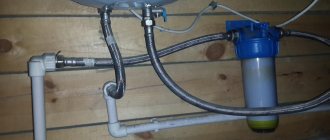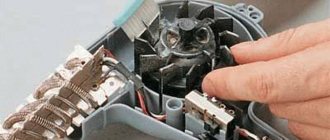Modern requirements for household appliances set fairly stringent requirements for the permissible noise level. That is why, if the noise level of a working vacuum cleaner has become significantly higher, this should be a signal that it requires additional attention.
The main source of noise from a running vacuum cleaner is the engine. An increase in the volume of a running engine indicates that it is operating at increased power. Long-term operation in this mode leads to overheating of the engine, as evidenced by an increase in the temperature of the air leaving the vacuum cleaner. This can cause engine failure and subsequent costly repairs.
To start
Before you pick up a screwdriver and take your vacuum cleaner apart, troubleshoot three common problems:
- empty the clogged dust bin;
- check clogged filters;
- cracks in the hose or telescopic tube.
Check if the dust bin is clogged
If the bag is more than two-thirds full of debris, the suction power weakens, creating the feeling that it “doesn’t pull.” The paper dust collector must be replaced with a new one, and the fabric one must be shaken out, rinsed in water and dried.
Make sure the hose, tube or brush is not clogged
If everything is fine with the bag and there is still no traction, check other components - brushes, telescopic tube and hose. The hose may be damaged - cracks, holes, clogged or not fully inserted into the housing.
Both small particles and large objects get stuck in the brushes, hose and tube: strings, napkins, handkerchiefs, rags, and so on. Because of them, the garbage does not pass through well, the vacuum cleaner hums loudly, howls, buzzes and makes other inappropriate loud sounds, and it smells of burning or something else burnt. Usually, after removing the blockage, traction is completely restored.
Also check the components for wear: in some cases, suction is hampered by jammed motor bearings or even improperly seated brushes.
Looking for cracks in a corrugated hose
Cleaning the filters
A big mistake is to inspect the dust collector, but not check the cleaning filters: after each cleaning, the elements become heavily filled with dust.
One of the filters is located in front of the fan. For cyclone vacuum cleaners, as a rule, this is a foam rubber plate inside a plastic collapsible body. At the back of the case there is a mesh with small cells. The plate must be knocked out well and washed together with the filter in water.
The second, rear fine filter is installed on the exhaust of the vacuum cleaner. Most often it is a separate box with a large number of cells. The cells should be cleaned with a soft brush and rinsed under running water.
If your vacuum cleaner is equipped with a water aquafilter, do not forget to clean it after each cleaning: disassemble it, wash each element and dry it thoroughly. This must be done even if there are no problems with the vacuum cleaner, so that bacteria and fungi do not multiply in dirty water.
We remember whether the equipment has overheated
If the vacuum cleaner gets too hot, the electronics can automatically turn off the electric motor. It is enough to wait 20-30 minutes for performance to be restored.
Equipment can overheat not only due to long hours of operation - there are other reasons:
- got hot because the network cable was damaged;
- the armature collector is clogged;
- bearings and brushes are worn out;
- The electronic unit or start button has failed.
The most serious problem with a vacuum cleaner is motor failure. To identify it, you will have to disassemble the device.
This is interesting: Do-it-yourself multicooker repair: nuances and subtleties of the process
How to diagnose
A drop in power is usually due to the following reasons:
- the bag is filled;
- filters clogged;
- hoses and nozzles are clogged;
- the engine has failed.
Possible reasons for a decrease in vacuum cleaner performance include mechanical damage. Therefore, before disassembling the equipment, it is recommended to inspect the housing and components.
Checking the bag
If the vacuum cleaner does not suck up dirt well, this indicates that the bag is at least 2/3 full. This reason is considered the most common. To restore the operation of the vacuum cleaner you will need (depending on the type of dust collector):
- Throw out the paper bag and install a new one.
- Shake out the cloth bag and, if possible, rinse, dry and return to its place.
- Rinse the plastic container and wipe dry.
This technique is usually complemented by an indicator that indicates the dust container is full. But if the bag is half empty, then it is necessary to look for the reason for the drop in suction power in the filters.
Cleaning filters
The second common reason for reduced power is clogged filters. The type of the latter depends on the type of vacuum cleaner. Filters are:
- fine and coarse cleaning;
- foam rubber, paper and others;
- single and reusable;
- NERA.
The last filter, in addition to removing small particles, also does not allow allergens back into the air. Basically, if this component becomes clogged, it is thrown away and replaced with a new one.
Reusable filters, usually made of foam rubber, are washed in clean water and dried before being installed in the vacuum cleaner.
This component is located between the dust collector and the hose. The second filter, which provides fine cleaning, is attached to the back of the vacuum cleaner body. This detail prevents the penetration of small particles into the air. It is also recommended to periodically rinse the fine filter in water. And after 50 such procedures, the product must be replaced with a new one.
Inspection of components
When cleaning rooms, objects or fur often get into the hoses and nozzles, which clog the air duct. Because of this, the power of the device decreases. Therefore, if the suction power decreases, you need to clean the brushes and other similar attachments from hair, threads, fabric and other third-party materials. If necessary, these components should be rinsed under running water and then dried.
A clogged hose is sometimes indicated by a strong hum made by a running vacuum cleaner. To clean this component, you will need a long metal wire to remove accumulated dirt.
Mechanical damage
A decrease in suction power may be due to cracks in the components (mainly the hose), broken nozzles, or a dent in the body. These parts are made of plastic. Therefore, the described malfunctions cannot be eliminated with your own hands. If external defects are detected on body parts, damaged nozzles, hoses or housing must be replaced with new ones.
The main malfunctions of vacuum cleaners from different manufacturers
For each manufacturer, we can identify the most common problem encountered in manufactured models. The analysis below is based on online customer reviews.
Samsung
Samsung vacuum cleaners are quite reliable, but they also require careful treatment and timely maintenance. It is necessary to monitor the condition of the filters and dust collector and clean them regularly. There are also problems with the motor and the power button.
LG
Judging by user reviews, vacuum cleaners from this manufacturer quickly clog filters and lose suction power; fragile attachments break faster than wear out. There are cases of excessive heating and shutdown during operation.
Philips
Those who at one time preferred vacuum cleaners from this company say that over time the suction ability is lost and the noise during operation increases. There are complaints about an unpleasant odor during operation and a poorly winding cord.
The Philips vacuum cleaner caused the following reaction from our author: Philips FC 9184
Bosch
Over time, the rubber seals of these vacuum cleaners suffer, and the parts fit less well to each other. Bosh often releases cordless models, and the batteries also sometimes require replacement. Often the engine also fails.
Dyson
In reviews of Dyson vacuum cleaners, there are practically no complaints about their performance. The only thing is that with wireless models, the battery discharges faster and faster over time and it has to be replaced (which, in principle, is natural).
Thomas
The Thomas company mainly produces vacuum cleaners with an aqua filter, and they require increased care - washing after each cleaning and drying thoroughly, otherwise they quickly fail and an unpleasant odor appears during cleaning. Also in the reviews there are complaints about the easily torn hose.
Troubleshooting
In the vast majority of cases, the cause of the malfunction is the failure of the motor. This can happen with absolutely every model from any manufacturer. The main sign of its malfunction is excessive noise and the formation of a dust cloud. Also, engine failure directly affects the suction power of the device.
Weak or no suction power may also indicate a hose malfunction. Also, evidence of a violation of the hose tightness can be excessively quiet operation of the device.
A decrease in the suction speed of the product may indicate bearing failure. The main symptom of this malfunction is the periodic restoration of normal operation of the device.
Low suction speed may be due to bearing failure
The reason that the device does not turn on may be a simple broken cord. First, the cord stops winding up and coming out normally, and then it becomes impossible to fix and remove it, which eventually leads to its fracture.
The main causes of breakdowns and recommendations for safe operation of the vacuum cleaner
The main causes of breakdowns are incorrect or careless operation of the device and insufficient care. In order for the vacuum cleaner to last longer, it is important to perform simple preventive actions:
- Monitor the cleanliness of the filter elements - collect dirt, wash if necessary and change on time. Using a vacuum cleaner with damaged filters will sooner or later lead to engine failure;
- lubricate and promptly replace bearings with new ones;
- do not drop or hit to avoid mechanical damage - chips, cracks;
- store correctly. A suspended or unsuccessfully twisted corrugated hose will sooner or later break, high humidity in the room or too low temperatures contribute to the failure of electrical contacts, etc.;
- read and follow the operating instructions.
It is important to protect not only the vacuum cleaner, but also yourself: under no circumstances use a device with a damaged housing or power cord insulation - this could result in electric shock.
What to do if the vacuum cleaner begins to hum loudly and stops suction
If the vacuum cleaner hums but does not pull, and the problem has appeared for the first time, you can usually fix it yourself. It is enough to clean the unit or carry out basic repairs.
Cleaning or replacing filters
If your vacuum cleaner makes a strange noise due to clogged filters, you need to clean or replace them. The algorithm depends on the design features of the device:
Important! If your vacuum cleaner has disposable filters, you will need to change them more often. Even after dry cleaning, paper HEPAs do not restore 100% functionality.
Cleaning the hose, dust container, brush
If the vacuum cleaner makes a loud noise and a lot of debris remains after cleaning, it is necessary to thoroughly clean the entire unit. The first step is to empty the dust collector of dirt. They do it like this:
- open the special cover on the front panel of the unit;
- press the latch or clothespin holding the bag;
- remove the product from the device.
If the bag is disposable paper, it must be thrown away immediately and replaced with a new one. Synthetic dust collectors made of thick fabric are carefully shaken out, trying not to spill dust on the floor, and then blown out with a stream of air on the balcony or in the entrance. Some bags can even be washed; this information should be included in the instructions for the unit.
You should shake out the vacuum cleaner bag without waiting for it to overflow.
The vacuum cleaner hose also needs maintenance. It is disconnected from the main structure, and then cleaned using a plumbing cable, used for sewer blockages. The hose can then be rinsed from the inside with running water and left in a warm room for several hours to dry completely.
If the robot vacuum cleaner starts to buzz a lot or the manual model works worse, it makes sense to clean the brush. Threads, wool, hair and other debris gradually accumulate on its villi. The suction power drops, which increases the load on the motor, causing the vacuum cleaner to hum.
The turbo brush of a vacuum cleaner gets clogged especially quickly when cleaning.
To clean the brush you need:
- Using sharp scissors, carefully remove dense accumulations of hair and threads;
- if there are “floor/carpet” modes, pull out the bristles and also clean them of debris;
- immerse the brush in a bowl of soapy water for 15 minutes;
- Wash the part thoroughly using a hard sponge and rinse.
Before reinstalling it on the vacuum cleaner, you need to wait until the brush is completely dry.
Engine repair
If cleaning the dustbin, hose and filters does not help, and the vacuum cleaner motor is still humming, you can try to repair the motor. To do this you need:
- Using a screwdriver, remove the rear cover of the unit;
- remove the motor;
- remove the front part of the casing;
- unscrew the impeller and wash it in hot water and soap;
- pull out the armature and remove the bearings;
- in case of mechanical damage, replace them with new, similar ones;
- If there are no defects, wipe the parts from the remains of the old lubricant and apply a new layer of lithol or cyathim.
After this, the bearings and the dried impeller are carefully put into place without excessive pressure and the motor part is reassembled.
When removing the vacuum cleaner motor, you need to remember or write down how the wires and fasteners were located
Attention! If the vacuum cleaner hums even after cleaning the motor, all that remains is to replace the motor. You need to find exactly the same model, but it should be borne in mind that the purchase can be expensive.
Design and operating features of the refrigerator
The main functional unit of the refrigerator is the compressor; it pumps freon through a capillary pipeline through the evaporator and condenser. The evaporator is a grille with a coil, which is located inside, usually on the back wall behind the freezer or around it; in “no-frost” systems it resembles the radiator of a car heater. With its help, heat is released into the environment.
It is almost impossible to imagine modern life without a refrigerator.
The condenser is located outside the refrigerator chambers; it can be open (as in old Soviet refrigerators), or it can be closed (as in some modern models). With its help, heat is released into the environment.
The compressor does not operate continuously, but periodically. The colder the temperature inside the cooling chambers is set, the more often and longer the compressor will operate. When starting the compressor, you may have noticed how the voltage in the network sags. This is accompanied by a short-term decrease in the brightness of incandescent lamps.
When it stops, you can often hear increased noise from the device, and in old Soviet models this noise and vibration sometimes develop into a real roar. This is due to the peculiarity of the compressor design - it is an electric motor that drives a piston similar to that used in internal combustion engines.
Such a design will inevitably vibrate, so rubber feet, hangers or springs are installed under the compressor. But what if the vibration is too strong? Let's find out!
How to avoid problems
When operating a vacuum cleaner, you must follow a few basic rules. Namely:
- Carry out timely maintenance of the garbage disposal, preferably after each cleaning;
- Clean HEPA filters regularly and do not use them longer than expected;
- Do not use a vacuum cleaner to suck up too large debris or sharp objects;
- do not use the unit to collect liquids if it is intended for dry cleaning only;
- during long-term cleaning, turn off the vacuum cleaner from time to time and do not operate it without interruption for longer than permitted by the instructions.
Conventional units are designed to eliminate household dust or small debris. They cannot be used to collect construction dirt, for example, concrete or plaster chips. It is also not recommended to suck up spilled flour using the device. Fine substances in large volumes clog filters almost instantly. At best, the vacuum cleaner hums after them, and at worst, it seriously breaks down and requires service repair.
How to clean the filter in a Samsung vacuum cleaner?
Cleaning a vacuum cleaner with a water filter
- Unplug the vacuum cleaner.
- Remove the contaminated container and rinse it with water.
- Rinse the filters with water and install them in place.
12 Dec.
2022 Interesting materials:
In what exchange of goods does class 3 money involve? Why is there a QR code on money? Whose city is Baikonur? What is 1983 famous for? What is the Russian city of Tula famous for? What does a woman wear twice a year? What was done during the reign of Catherine 2? What happened in 1791? What happened in 1920? What happened in 30 BC?
Differences in noise levels between different models
When choosing vacuum cleaners, many first of all pay attention to the noise factor of the device, since if there is a small child in the family, it will be impossible to carry out loud cleaning. For a visual comparison, it makes sense to consider the functionality of the most popular vacuum cleaner models and noise level:
- The iRobot Roomba 980 performs dry cleaning only, but can work on both regular flooring and carpet. The noise level is 63 dB.
- Philips FC 8820 costs slightly more than the first option, has long side brushes, and the ability to work for a long time without recharging. The device makes noise at 58 dB.
- Karcher RC 3000 is even less noisy - 54 dB. There is not a very capacious dust collector and there are no side brushes, and the electrical power is 600 W.
- The REDMOND RV-R400 vacuum cleaner is suitable exclusively for dry cleaning, takes quite a long time to charge and makes a lot of noise during operation. The noise level is 72 dB.
If you look at the store offers, the category of relatively quiet devices includes vacuum cleaners with a noise level from 35 to 55 dB. There is no direct relationship between noise and the cost of devices, although in practice, expensive models are designed in such a way as to produce as little noise as possible.
How to reduce motor noise?
Replacing roller bearings with ball bearings of the same size reduces noise
by 2-4 dB.
It is also advisable to use special low-noise bearings. Of great importance is the correct alignment of the electric motor
with the drive mechanism, their joint balancing, and the use of shock absorbers and elastic couplings.
Interesting materials:
How long does the planet revolve around the Sun? How many full-fledged planets revolve around the Sun? How many moons does the planet Jupiter have? How many moons does the planet Mercury have? How many moons does the planet Neptune have? How many moons does the planet Venus have? How many planets are there on Earth? How many planets are there in our solar system? How many planets are there in the solar system? How many planets orbit the Sun?
Cleaning filters
In most cases, your device may start making noise due to the fact that you did not clean the filters or the garbage bag in time. Due to severely clogged filters, air simply cannot get to your engine and, as a result, it will make noise. If the vacuum cleaner motor growls, then check the filters and clean the debris bag. In most cases, this gets rid of the problem.
If necessary, you can also check the hose and brush. Perhaps something just got there and because of this the vacuum cleaner is loud.
Problems requiring repair
Without basic knowledge of electrical engineering, diagnosing the cause of an engine malfunction is quite difficult. It must be removed from the housing, disassembled and all circuit elements tested with a multimeter.
The motor winding burns out
If the engine is fully operational, it may spark slightly due to dust getting on the brushes (and smells burnt). But strong sparking is already suspicious.
One of the reasons for sparking may be a short circuit in the armature winding: then it is necessary to rewind or replace the rotor. The stator winding is checked by measuring the resistance - if it is different in several parts, the winding is rewound or changed.
Graphite brushes are worn out
The brushes no longer fit closely to the commutator contacts for two reasons: wear and low-quality materials. Poor contact negatively affects the starting and further operation of the engine.
We repair the engine
If you have cleaned all the filters, but the engine hums like an airplane, then most likely the problem is worn bearings. The fact is that if the filtration system is heavily contaminated, dust will enter the engine compartment and stick to the moving parts. As a result, the engine begins to run dry, after which it begins to hum or whistle.
If you detect a breakdown in time and immediately begin to fix the problem, you may get away with simply lubricating the bearings, as shown in this video:
It happens that the engine simply becomes clogged with debris, after which it begins to hum loudly. In this case, it can also be saved by simply cleaning it, as shown in this video example:
If lubrication of the bearings does not help, then the problem is in the windings or other elements of the engine. Repair in this case is most often not advisable, especially if the equipment is old. It would be much wiser to buy new equipment. You can read about how to choose a quality vacuum cleaner for your home in our article.
That's all the advice we wanted to provide. Now you know why the vacuum cleaner hums and how to repair it yourself. We remind you once again that the main cause of breakdown is clogged filters, so be responsible when servicing the device!
- Why is the refrigerator loud?
- The vacuum cleaner does not suck up debris - reasons
- Rating of robot vacuum cleaners 2022
Let's look at user reviews
Vacuum cleaner users, mostly our lovely housewives, are trying to figure out the cause of the hum and ask a lot of questions. Here are just two popular questions of the same type: “Tell me, why does the vacuum cleaner hum loudly?” and “My Samsung vacuum cleaner is noisy, what should I do?”
Photo 9. A reliable Samsung vacuum cleaner needs constant filter cleaning
It turns out that modern Samsung models have special built-in sensors that regulate motor overheating. If the vacuum cleaner turns off during a long period of operation, it needs to rest until the engine cools down. If this rule is ignored, during further operation, it may fail. In addition, the Samsung 1600 w model is equipped with a large number of filters that need to be cleaned periodically.
Also read our article about Samsung vacuum cleaners equipped with an Anti Tangle turbine.
After reading reviews on forums about a vacuum cleaner that began to hum loudly, users draw conclusions for themselves. Now they try to fill the dust bag only halfway, for fear of ruining the engine. Now their vacuum cleaner works silently.
Photo 10. Regular washing of filters is an unshakable rule
Question answer
What are the main reasons for a vacuum cleaner to overheat?
- clogging or damage to components,
- dust bin overflowing with garbage,
- engine malfunction,
- dirty filters.
Malfunctions should be checked in the following order:
- disconnect the hose - if without it the device heats up less, a blockage or kink does not allow air to flow, or the problem is in the telescopic tube;
- inspect the inlet of the vacuum cleaner for foreign objects;
- check how the device works without a dust collector;
- examine the condition of the filters;
- check the engine.
Why did the vacuum cleaner become loud?
Engine breakdown, failure of one or another component, bag filled with garbage (dust penetrates into the engine compartment).
If the engine is seriously damaged, it is better to purchase a new vacuum cleaner: replacing the motor is not economically feasible.
Samsung won't turn on, reason, engine sparks and gets hot, how to fix it
If the vacuum cleaner is loud, then perhaps it just needs to be cleaned. A vacuum cleaner is an integral part of quality cleaning. Like any equipment, an electrical device can fail at the most inopportune moment. One common problem is the noisy operation of the device. You can fix the damage yourself. It is necessary to figure out why the vacuum cleaner began to operate loudly.
Typical Causes of Loud Noise
Does your vacuum cleaner vibrate and hum suspiciously loudly when running? There are several reasons for this problem:
- accumulation of large debris in the hose;
- compressor malfunctions;
- engine failure;
- clogging of the filtration system;
- malfunctions of electronic components;
- damage to bearings and commutators;
- brush abrasion;
- impeller imbalance.
Important! Sometimes, when there is excessive noise, the body of the device heats up, vibrates, and it periodically turns off.
The vacuum cleaner whistles when working - analysis from A to Z
Vacuum cleaners are types of household appliances that are used everywhere and very often. As a result, despite the quality and cost, sooner or later almost every owner is faced with various situations of failure of these devices.
And one of them is the appearance of extraneous noise - for example, a vacuum cleaner begins to whistle when working. In order to troubleshoot a problem, you must be able to correctly diagnose loud noise.
Find out the main types of breakdowns, as well as how to fix them.
Most popular damage
If you do not clean the dust collectors in a timely manner, do not change the filters, or use the device without an aquafilter to collect moisture, you will find a malfunction.
The filter is clogged
Damage occurs as a result of infrequent cleaning of the dust bag or filters. Has your household vacuum cleaner suddenly become very loud? The problem is explained by operation in overload mode, which intensifies the sound. Check the hose to see if large debris, dust bunnies, hair or animal fur may have gotten into it.
Most often, a clogged filter is to blame. Important! If measures are not taken in time, suction power is lost and the equipment may simply not turn on.
The bag is overflowing
Dust collectors have a certain filling limit - up to 80%. Disposable bags should be changed after each cleaning, and fabric bags should be washed thoroughly. To avoid clogging, before work, check the quality of fastening of parts, attachments and dust collectors.
Paper bags should be changed after each cleaning, and fabric bags should be washed thoroughly. Tip! If you forget to pay attention to the amount of garbage in the bag, buy a model with a light indication of fullness.
Failure of one or more components
Excessively loud noise can be caused by damage to the motor, impeller, brushes, motor, bearings and commutators. When everything is in order with the filters and bags, but there is a hum, contact the service center. Self-disassembly and repair will lead to a complete stop of the device.
Engine defect or malfunction
If there is a manufacturing defect in new equipment, the buzzing appears from the very beginning. According to the Consumer Protection Act, you can replace your vacuum cleaner within 14 days. If the breakdown occurs later, you have the right to free repairs at the manufacturer’s service center.
Vacuum cleaner motor
Correct operation
As practice shows, most breakdowns occur due to improper operation of an electrical appliance. To extend the life of your microwave, you should follow simple recommendations:
- Do not use metal containers to heat food.
- It is not allowed to operate the electrical appliance without food in the working chamber.
- Liquids and raw eggs should only be heated in closed containers.
- The working chamber should be kept clean
A microwave oven is a complex and dangerous household electrical appliance. Along with ease of use, it requires competent operation. The reasons for a microwave malfunction can be different and are not always determined by eye.
Repairing the device should be approached with care and caution. A microwave oven has the property of accumulating electricity, which can cause damage if repairs are not carried out correctly.
If there are some doubts, it is better to give preference to quality repairs at a service center.
Tags: , sconce, view, engine, house, , replacement, sign, like, , , power, opn, rule, wire, start, vacuum cleaner, , work, size, repair, recipe, row, garden, light, system, means , term, ten, type, current, , filter, shield, electricity
First of all, we clean the filters
Most often, the device is noisy due to the fact that air does not get to the motor, and therefore it is operated in overload mode. The reason for this phenomenon is trivial: the owners have not cleaned the filters for a long time and do not empty the contents of the bag in which the sucked debris is collected in a timely manner. By removing the clogged filters and emptying the garbage bag, you can easily solve the problem.
Photo 2. Variety of filters for vacuum cleaners
There are three types of filters used in household vacuum cleaners:
1. Primary – collecting debris and large dust particles that accumulate in a bag made of paper or fabric;
Photo 3. Primary filter sample
2. Nera – for collecting microparticles up to 0.3 microns in size, preventing them from getting on the device’s engine and extending its service life. They are:
- disposable, made of paper. Some people reuse them, cleaning them with a jet of compressed air. This method restores the filter by 80%. For an ideal result, it is better to replace it;
- reusable, made of polymer materials. They are washed and dried. But this does not protect them from harmful bacteria and germs.
Photo 4. Washing the reusable filter under running water
3. Aquafilter or water filter. The principle of operation is simple: dust particles are wetted, become heavier and settle inside the dust collector. The filter consists of a container for collecting large debris, dust particles and nerf. They clean it in this way: the container is washed, and the oil is washed and dried, or vacuumed and put in place.
Photo 5. Vacuum cleaner with a cyclone filter
4. Cyclone filter, which consists of a container and a filter. The dust is exposed to an air flow that picks up the smallest particles and sends them into a special transparent plastic dust collector. It must be cleaned after each use of the vacuum cleaner. Having freed the container from debris, the filter is washed, shaken out, knocked out or blown out.
Industrial and some expensive household models of vacuum cleaners have an automatic filter cleaning function. But even in them, due to active use, nera can become clogged. We already know how to clean them. From time to time the filter needs to be replaced with a new one.
Photo 6. Replacing the filter
We recommend! It is advisable to do this not in the apartment, but outside, so that dust with microbes does not again make the room dirty and harm your health.
Sometimes the vacuum cleaner not only runs loudly, but its suction power decreases. After cleaning the filter elements and replacing them, everything returns to normal.
Important! It is not unnecessary to check the suction hose and brush. Filled with scraps of paper, cellophane, and large objects, they can also cause the vacuum cleaner to hum.
How to remove smell from a vacuum cleaner? Good advice
What to do if the vacuum cleaner smells unpleasant and gets stronger every time? Below are a number of practical recommendations on how to get rid of the stench forever.
This is interesting: Handheld vacuum cleaner - how to choose and how to use: 5 advantages and 5 selection criteria
- If the dirt tank is empty, and the new vacuum cleaner still smells unpleasantly of plastic, you can wait a while until the industrial “smell” disappears.
- A more serious problem is that one of the filters is dirty. In such a situation, you need to wash it thoroughly (if the filter design allows it) or wipe it. The filter can also be disposable - then you just need to replace it with a new one.
- Another problem with a reusable filter is that it does not dry out enough after washing. That is, drops of water remaining in it can lead to rotting of the filter. As a conclusion, you can remove odor from a vacuum cleaner by thoroughly drying the filter after each cleaning.
- The next source is a clogged tube or hose in the cleaning product. The solution to this problem: you need to disassemble the vacuum cleaner, use a thin and long object to push the stuck object out of the pipe or hose and - voila, the problem is fixed. With vacuum cleaners-mops it is more difficult: for example, the design of the Hoover ATV30RM011 does not allow you to disassemble it yourself. If the tube is clogged, you will have to contact service.
- If all of the above problems are not noticed, and the question of how to eliminate the smell from a vacuum cleaner is still open, you need to sound the alarm. This signal indicates that the problems lie inside the gadget: contacts are shorted and parts are melting from the inside. In this case, you need to immediately call a technician to fix the problem. Self-indulgence can lead to unpleasant consequences.
It will be useful to know: Vacuum cleaner or steam cleaner (steam mop) - what to choose? 5 advantages and disadvantages of a steam generator
Useful tips Connection diagrams Principles of operation of devices Main concepts Meters from Energomer Precautions Incandescent lamps Video instructions for the master Testing with a multimeter
How to clear the blockage?
The vacuum cleaner is very loud, even buzzing annoyingly, but you don’t know what to do? You can clean the filters yourself or repair the engine.
Advice! Before making repairs, unplug the equipment.
Cleaning filters
The equipment may make noise because, due to clogged filters, air masses do not reach the motor. The problem can be fixed as follows:
- primary fabric or paper elements are completely replaced;
- disposable HEPA filters are cleaned with a jet of compressed air or replaced;
- reusable polymer HEPA filters are washed and left until completely dry;
- aquafilters are cleaned by washing the container, HEPA and drying;
- The cyclonic filtration elements are cleaned after each cleaning by emptying the container, shaking out, knocking out or flushing with HEPA.
Washing the filter under running water
Expensive models have automatic filter cleaning, but after the expiration of time, the part must also be replaced.
Advice! It is better to carry out cleaning outside or on the balcony so that dust and germs do not enter the room again.
How to change the filter?
If cleaning the filter elements does not help, you need to do the following:
- Wipe the dust container with a damp cloth and remove debris;
- Thoroughly clean the ribs and niches on the body - dust also accumulates there;
- Check the fasteners, since debris and dust reduce the quality of fixation of the dust collector, which leads to wear of the bearings;
- Blow out the place where the motor is attached, removing the dust collector.
Advice! Tilt the body in different directions, adjusting the suction power - this will remove dust particles from the engine compartment.
Engine repair
If after cleaning the filters and completely blowing out the equipment, the hum remains, then there is a possibility of bearing wear. It is a consequence of severe contamination of the filters, access of dust to the motor and sticking to the rotating components. A motor running “dry” causes the vacuum cleaner to hum and whistle.
The user can carry out initial repairs of the motor:
- lubricate the engine with quick-drying lubricant;
- replace bearings;
- check the motor winding - you need to unscrew the cover with a screwdriver, remove the motor and feel the shaft with your fingers. If play is detected, the bearings can be replaced;
- Clean the impeller - unscrew it, wash it in hot water with washing powder, dry it and put it back together.
You can carry out initial engine repairs
Advice! You need to work with the plastic impeller carefully - there is a risk that it may dent or burst.
There can be several reasons for a humming vacuum cleaner. Clogged filters and a filled bag are easy to replace yourself. A faulty motor should be replaced. It is advisable to buy it from official suppliers of parts from the manufacturer. There is no point in repairing an old vacuum cleaner; it is better to buy a new one.
Watch a video about what to do if your vacuum cleaner is noisy
What you can do on your own
What should I do if the vacuum cleaner turns off during cleaning and does not turn on again, or when it does not turn on after storage? First you need to understand what happened. The algorithm of actions (and it must be performed sequentially) will be the same for all devices, regardless of the type of dust collector, be it a container, bag or aquafilter.
- Check the power source. If there is electricity in the apartment, try plugging the vacuum cleaner into a different outlet. Perhaps the breakdown did not happen to him, but to the socket.
- Inspect the power cord and plug for breaks, kinks, or other defects. The plug should not be melted, there should be no visible damage in connection with the cord or on it itself.
- The next likely problem is the dust collector. If it is clogged, a safety shutdown may be triggered. Empty the dust container or change the bag. Check the hose to see if it is clogged with large debris.
Dust container is full
If the vacuum cleaner does not come to life at any stage of the diagnosis, the problem is a broken or burnt out motor. In this case, only service technicians will help, who will test the device on professional equipment and repair it.
Disassembling the vacuum cleaner
Now we come to the most important and complex breakdown - repairing the vacuum cleaner motor. To verify this, you need to disassemble the vacuum cleaner. Carefully remove all protective parts of the housing and find the engine itself. Now, very carefully, observing all safety precautions, turn on the vacuum cleaner. If the cause of the breakdown lies in the motor, then most likely you will see a bunch of sparks coming from the engine. There may be several reasons for this:
- brush wear;
- interturn short circuit in the winding;
- increased load on the “engine”.
So, in order. To replace graphite brushes, you first need to unscrew and remove the plastic caps and remove the springs. We take out the brushes themselves and insert new ones. Next, we perform all the steps in reverse order - insert the springs, tighten the caps. In order for the brushes to work properly, they need to be ground in. This can be done by stretching fine sandpaper between the brush and the commutator. In this case, the abrasive of the sandpaper should be turned towards the brush and, as it were, scratch it a little.
Reasons for loud operation of a vacuum cleaner
There are several main reasons why the vacuum cleaner becomes loud.
An overfilled dust bin is one of the most common causes, especially for older models. The dust bag can hold a certain amount of debris and must be changed periodically for disposable dust bags or cleaned (for reusable cloth bags). An acceptable filling level is around 80% of the volume, then the filtering capacity of the bag decreases significantly, the suction power drops, and the engine begins to operate at maximum power. Modern models of vacuum cleaners have a special light indicator that signals when the dust container is full.
Advice:
You should not reuse a disposable bag - it has low strength and a short service life. It can rupture at any time and all debris and dust will fall into the engine compartment, which can cause serious damage. Reusable bags need to be washed to improve their airflow permeability.
Clogged filters – modern vacuum cleaners have a multi-stage air purification system; premium-segment vacuum cleaners with HEPA filters are capable of capturing up to 95–99% of contaminants. After prolonged use, the filters become clogged, so additional power is required to allow air to pass through them. Some filters (mostly foam rubber, coarse filters) can be washed and they will almost completely restore their filtering capabilities.
Foreign objects - the traction of the vacuum cleaner may weaken due to balls of dust, large pieces of paper or debris, toys and other objects getting into the hose that will interfere with the free passage of air flow.
Technical fault – loud engine operation may be caused by worn bearings. If the filtration system is not promptly and completely cleaned, dry dust enters the engine compartment, settling on moving parts. As a result, the coefficient of friction increases sharply; if the bearings are not lubricated in time, they begin to operate virtually “dry,” which leads to their wear. It is much worse if the problem is caused by a winding malfunction or component failure. In this case, you will have to contact the service center.
Important:
If, when turned on, the new vacuum cleaner immediately starts to work very loudly, you must immediately contact a service center. It is highly likely that the problem is related to a manufacturing defect, so this vacuum cleaner can be exchanged.
Noise change - what does it mean?
A change in noise is a clear indication that something is wrong with the vacuum cleaner. First of all, you should check the dust collector. Each collection has its own limit on the amount of garbage that can fit there, taking into account its compaction as it accumulates. But manufacturers do not recommend waiting until the compartment is completely filled, because after 80% of the volume is filled, the suction power will decrease. At the same time, the engine will begin to work with increased power, which directly affects the noise level.
Vacuum cleaners are required to be equipped with air purification filters, which also have their own expiration date. If the filters are not changed for a long time, it will be more difficult for air to pass through them, and accordingly, the motor will start to work more intensely and noisily. Some filters are disposable; reusable ones should be washed periodically so that the initial filtering capabilities are restored.
The robot may accidentally pull on an object that is too large or oddly shaped for it, causing airflow to not flow as freely as before. In more advanced situations, noise may be caused by a technical malfunction of the motor itself, for example, this happens due to dust entering the engine compartment. The presence of dust causes wear on moving parts.
You also need to pay attention to the condition of the turbo brush. During the cleaning process, a clump of hair or thread may become wrapped around it, which leads to difficulty in movement and increased noise levels.
After cleaning, it is very important to correctly install these brushes in place, as this can also cause unpleasant and loud sounds during operation of the device. The noise problem can most often be solved by cleaning the dust container and replacing the filters.
This needs to be done in a timely manner, since a motor malfunction can lead to the need for expensive repairs, which would make it easier to buy a new vacuum cleaner
The noise problem can most often be solved by cleaning the dust container and replacing the filters. This must be done in a timely manner, since a motor malfunction can lead to the need for expensive repairs, which would make it easier to buy a new vacuum cleaner.
The owner of the device is almost always to blame for the presence of too much noise when operating a robot vacuum cleaner. It is he who must monitor the timely cleaning of filters and the removal of debris from the dust collector. But we cannot exclude a manufacturing defect, which leads to the initially too noisy operation of the device. In such a situation, you should immediately contact the service center and change the robot vacuum cleaner or simply take your money back.
Device is not working
A robot vacuum cleaner may not work for a variety of reasons, some of which I described above. Other common faults may include:
- The robot refuses to execute commands with an error code displayed on the display. In this case, you need to find a decoding of the displayed code in the device instructions and understand the reason for the stop. Perhaps the wheels are tangled in wires or the dust collector is simply clogged.
- Absence of any signs of life, including indications. Most likely, the reason is that the battery is completely discharged. You need to take the robot to the docking station and check the connection of the charging terminals.
- No response to smartphone or remote control. You need to check the WiFi connection and check the batteries in the remote control.
Thus, most functional failures of robot vacuum cleaners are associated with simple mechanical problems or violation of the operating rules described in the instructions for the device. Preventative cleaning of work accessories and regular emptying of the dust container improves the quality of cleaning and significantly extends the service life of the robotic assistant.
Stanislav Marchenko
Karcher vacuum cleaner motor hums
Message by kotovich » May 20, 2012 05:54 pm
Help me solve the problem - the Karcher DS 5500 suddenly began to hum very loudly and high-pitched (1.5-2 times higher than usual) and there was a strong smell (I won’t say it was burning, but similar ) from the blown air. The craving is there, it seems to be with the same strength, whether it has decreased or not, I cannot assess. I don’t notice any sparking (the engine is not visible). When starting up and shutting down, you hear a kind of friction sound or something. Possibly for metal. Lifespan: approximately since 2006, use for at least 30 minutes 1-2 times a week.
I assume there is some kind of engine malfunction (the brushes are worn out or something else is wrong with the winding).
But: the problem is still with how to disassemble it. I couldn't find anything on the Internet about this issue. Perhaps someone has come across Karchers and knows how they assemble vacuum cleaner bodies.
Post by iasenipeni » May 20, 2012 09:41 pm
Post by kotovich » May 21, 2012 00:39
With disassembly the issue is resolved. The upper buttons each have 2 internal latches, located closer to the longitudinal axis of the case and directed in the same direction. They are viewed and pressed more conveniently when the button is pressed. Under the buttons, unscrew the visible screws. Also, there is a screw in the niche of each wheel; remove the wheels before unscrewing. Then, when the bottom is removed, squeeze the top on the sides towards the center and towards the nose - the top in the nose will open (the latch will open there), then everything is clear.
As a result, the “bad” turned out to be a poorly screwed nut on the metal axis of the engine, which is on the injection side. Because of this, the fan and the washers securing it began to spin on the axis, friction, temperature - as a result, there was a grinding noise, a whistle, part of the fan attachment to the washer on the engine side was worn out, the upper washer was worn out, and little by little everything. I added a homemade metal washer with a device for better clamping of a loose fan. I'll do some sea trials in the morning. The problem with the design of the engine is that there is no stop for screwing the bottom nut. I twist while holding the top fan, but it collapses because... It twists in the opposite direction. For emphasis, I made a cut along the upper end of the axle (under a flat-head screwdriver) - half of it was torn off at once. It feels like everything here is made of shitty iron or some kind of “lumine” in general. F#ck, in general. I took a couple of photos if anyone is interested. In general, about Karcher - it was done intelligently, but primitively. It's not worth what they ask for.
Source
Navigation problems
Failures in the navigation system of the robot vacuum cleaner may be indicated by cyclical circular drives, constant collision with obstacles, or returning to the base immediately after launch. From the list of possible malfunctions, you should first of all exclude clogging of orientation sensors, which may vary depending on the design of the robot:
- IR obstacle detection sensors (usually hidden under tinted bumper glass);
- ultrasonic and edge sensors - in small windows on the bumper and on the side;
- fall sensors - along the perimeter of the bottom;
- laser rangefinder - a “puck” with slots on the robot cover;
- overview video camera - in the recess on the front panel.
Each of the detected sensors must be blown out and wiped with a dry cloth. You should also check the functionality of the wheels - a clogged rotary roller often causes the vacuum cleaner to move backwards and then turn off.
Another common problem involves a black pattern on the carpet or floor that the robot perceives as an insurmountable obstacle, or black furniture that the robot constantly crashes into at full speed. Such navigation features are explained by the shortcomings of orientation sensors: IR fall sensors perceive black stripes on the floor as gaps that need to be avoided, and IR obstacle detection sensors, on the contrary, perceive black furniture as free space. You can avoid such incidents by initially choosing a robotic assistant with an advanced navigation system based on lidar, echolocator or video camera.

